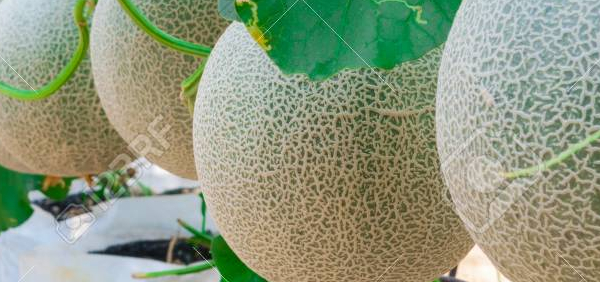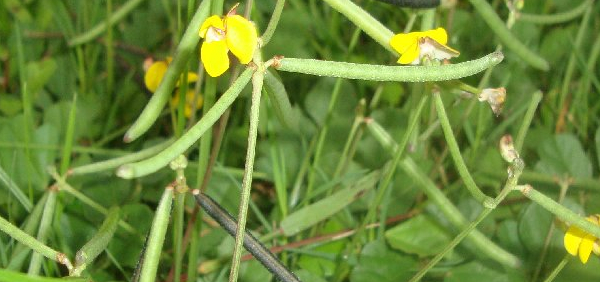triputa :
 Allophylus serratus Kurz is one of the largest genus of family Sapindaceae found extensively all over India. It is a large shrub or small tree grows upto 10 meters in height. The plant has a distinction of being used in Indian system of medicine (Ayurveda) as an anti-inflammatory and carminative drug and has been used in elephantiasis, oedema, fracture of bones, several gastrointestinal disorders including dyspepsia, anorexia and diarrhoea, wound, ulcers, anorexia and general debility. The fruits are sweet, cooling and nourishing tonic (Gupta et al., 2004).
Allophylus serratus Kurz is one of the largest genus of family Sapindaceae found extensively all over India. It is a large shrub or small tree grows upto 10 meters in height. The plant has a distinction of being used in Indian system of medicine (Ayurveda) as an anti-inflammatory and carminative drug and has been used in elephantiasis, oedema, fracture of bones, several gastrointestinal disorders including dyspepsia, anorexia and diarrhoea, wound, ulcers, anorexia and general debility. The fruits are sweet, cooling and nourishing tonic (Gupta et al., 2004). HISTORICAL AND MYTHOLOGICAL REVIEW:
Allophylus serratus is a Chinese tree species first described by William Roxburgh , and was given its current name by Wilhelm Sulpiz KurzTaxonomical Classification
Kingdom: Plantae - Plants
Subkingdom: Tracheobionta - Vascular plants
Superdivision: Spermatophyta - Seed plants
Division: Magnoliophyta - Flowering plants
Class: Magnoliopsida - Dicotyledons
Family: Sapindaceae
Genus: Allophylus
Species: Allophylus serratus
Allied species:
A. cobbe (L.) Raeusch., A. chartaceus(Kurz.) Radlk., A. villosus (Roxb.)Blume, A. concanicus Radlk., A. dimorphus Radlk., A.subfalcatus Radlk., A. triphyllus(Burm.f.) and A.rheedii (Wight.)Radlk.VERNACULAR NAMES
Sanskrit: triputahEnglish: Indian Allophyllus
Hindi: tippani
Telugu: eravalu, guvvaguti, juttika, paladondativva, sallikunkudu, savitibukka, tangutam, tantisa, tavatiki
Marathi: memdri, mirisat, tipani, tipin
Oriya: Kandakola, Kontakura
Tamil: amalai, perakkutikkay, perrakudikai, sirusalle
Malayalam: mukkanamperu, mukkannanpelu, mukkannapperuku, nukkannanperera
Kannada: sidisale, sisidale
Varities:
Definition
Allophylus serratus is a Chinese tree species first described by William Roxburgh , and was given its current name by Wilhelm Sulpiz KurzSynonyms
Synonyms in Ayurveda: triputaRasa: Kashaya Madhura Tikta
Guna: Guru
Veerya: Sheetha
Karma: Pittahara Vatahara
The plant has a distinction of being used in Indian system of medicine (Ayurveda) as an anti-inflammatory and carminative drug, and has been used in elephantiasis, oedema, fracture of bones, several gastrointestinal disorders including dyspepsia, anorexia and diarrhoea (Gupta, A.K., Tandon, N., 2004) The fruits are sweet in taste and have cooling and nourishing tonic. In some part of Nigeria, the leaves and even roots are reported to be eaten to induce lactation. The root contain tannin and are considered astringent; they are stated to be used for treating piles and nose bleeding (Agrawal, V.S., 1997 )
Cultivation:
It is well adapted to grow in coarse and fine sandy and nutrient poor soil but prefers sandy loam with slightly high moisture content and it can grow well in shade too. The plant is tolerant to drought and high salinity (Selvam, 2007).Harvesting:
Phytochemistry:
The plant is found to be reported for its phytoconstituents like Quercetin, pinitol, luteolin-7-O-β-D-glucopyranoside, rutin, apigenin-4-O-β-D-glucoside (Kumar et al., 2010), β -sitosterol and phenacetamide (Hegnauer, 1961). Allophylus edulis is reported to have L-Quebrachitol (Diaz et al., 2008) and cyanolipids and triacylglycerols from seed oil (Aichholz et al., 1997). A novel type α-trans-polyprenols, alloprenols were found in the leaves of Allophylus caudatus (Ciepichal et al., 2007). A new sesquiterpene 11- acetoxy-4 α-methoxyeudesmane and other known compounds carissone and apigenin-8-C-β-rhamnopyranoside were reported in Allophylus laevigatus (David et al., 2004). The seed oil extracted from Allophylus natalensis is reported to have triacylglycerol, type I cyanolipids, 1-cyano-2-hydroxymethylprop-2-en-1-ol-diesters with minor amounts of type III CL, 1-cyano-2-hydroxymethylprop-1-en-3ol-diesters (Avato et al., 2005). Preliminary chemical characterization of the aqueous extract of Allophylus cominia leaves reported total protein concentration, fatty acids like lauric acid, myristic acid, palmitic acid, stearic acid, arachidic acid and carbohydrates like arabinose, xylose, galactose and glucose (Rodriguez et al., 2005).Parts used for medicinal purpose
Whole plant, ,Morphology:
An evergreen, low branching small tree to shrub, 2-3 m tall; bark is rough with a number of small pustular air pores; outer layer of the bark is strongly aromatic and inner layer is fibrous. Leaves alternate; lamina 3-foliate, leaflets 6-13 × 3-8.5cm, terminal leaflet is larger than the laterals, elliptic-lanceolate, bluntly serrate. Flowers 4-merous, 2-3mm across, white, crowded on 5-10cm long axillary racemes. Calyx campanulate. Corolla white, with reflexed shaggy scales. Stamens 8, almost equal to the corolla lobes. Ovary 2 celled, ovule 1-per each cell; styles 2, connate below. Berry 3-4mm across, globular, red when ripe. Seed with a short aril.Geographical distribution:
ECOLOGICAL ASPECT:
Common in dry forests of foot hills.Plant conservation:
Not EvaluatedGeneral Use:
Therapeutic Uses:
The plant has a distinction of being used in Indian system of medicine (Ayurveda) as an anti-inflammatory and carminative drug, and has been used in elephantiasis, oedema, fracture of bones, several gastrointestinal disorders including dyspepsia, anorexia and diarrhoea (Gupta, A.K., Tandon, N., 2004) The fruits are sweet in taste and have cooling and nourishing tonic. In some part of Nigeria, the leaves and even roots are reported to be eaten to induce lactation.Systemic Use:
Administration:
Fruit pulpPharmacological:
The root contain tannin and are considered astringent; they are stated to be used for treating piles and nose bleeding (Agrawal, V.S., 1997 )Clinical trials:
Dharmani, P., P.K. Mishra, R. Maurya, V.S. Chauhan and G. Palit, 2005. Allophylus serratus: A plant with potential anti-ulcerogenic activity. J. Ethnopharmacol., 99: 361-366.Research:
Toxicity studies:
Acute toxicity studies show that drug is safe up to the dose of 4000 mg/kg body weight.Use in other system of medicine:
Allophylus serratus is a local medicinal plant used traditionally for the treatment of diarrhea, inflammation, ulcer, elephantiasis and gastro intestinal disorders. The leaf extracts of this plant were assessed for in vitro anti-inflammatory and antibacterial activities.CONCLUSION:
Allophylus serratus Kurz is one of the largest genus of family Sapindaceae distributed all over India. The plant has got strong ethnopharmacological background like useful in the treatment of inflammation, gastrointestinal disorders, elephantiasis, osteoporosis etc. The ethanolic extract of the plant was reported for its antiulcerogenic and antiosteoporetic action, beyond its other traditional uses.Photos of triputa -
- Courtesy: https://upload.wikimedia.org/wikipedia/commons/b/bd/Allophylus_serratus_at_Palappuzha_%281%29.jpg
- Courtesy: https://upload.wikimedia.org/wikipedia/commons/f/f2/Allophylus_serratus_at_Palappuzha_%282%29.jpg
- Courtesy: http://envis.frlht.org/showplantimage.php?d=116_1
- Courtesy: http://d2seqvvyy3b8p2.cloudfront.net/aa230fcfa47ad50e574163654299256c.jpg
- Courtesy: http://d2seqvvyy3b8p2.cloudfront.net/f2bc37a974420cb3eaf7b44fa26da653.jpg
KEY WORDS: triputa , Allophylus serratus
- » Classification and names of triputa
- » Synonyms and definitions of triputa
- » Drug Properties of triputa
- » Chemical Constituents of triputa
- » Standardization of triputa
- » Parts used and Dosage of triputa
- » Morphology and Histology of triputa
- » Distribution and Conservation of triputa
- » Cultivation of triputa
- » triputa in the market
- » Medicinal Uses of triputa
- » Researches and clinical trails of triputa
- » triputa in other sytems of medicine
- » Ayurvedic formulations with triputa
- » Images of triputa



















